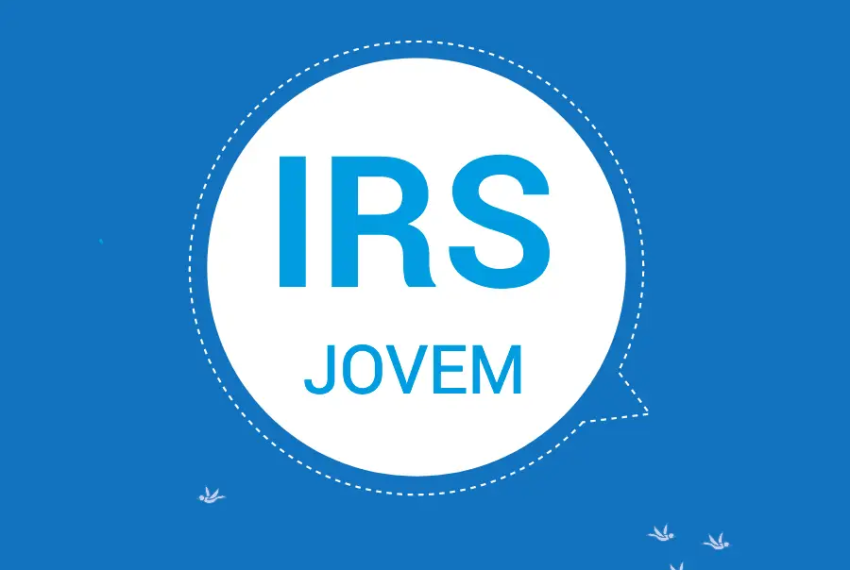
IRS Jovem in 2025
Through the IRS Jovem regime, from 2024 it is already possible to benefit from a 100% tax exemption in the first year of work. Find out who can benefit from this support and how much you save.
In order to make life easier for many young people who enter the job market every year, the Government launched the IRS Jovem initiative in 2020, which provides partial tax exemption in the first years of their career.
From 2024, this regime gave a 100% exemption on the tax to be paid to young people in their first year of dependent or independent work. For 2025, it is already known that a maximum income tax ceiling of 15% will be applied to young people up to 35 years of age. Find out who is entitled to this support and how it works.
What is IRS Jovem?
The IRS Jovem consists of a taxation regime aimed at young people who start working for others and who, therefore, begin to have tax responsibilities for the first time in their lives. This translates into a discount to be applied to the amount of IRS (Personal Income Tax) to be paid.
This initiative was one of the measures initially implemented in the State Budget for 2020 and its main objective is to facilitate the entry of many young people into adulthood.
In 2024, the maximum benefit amounts increase, and in the first year of work no tax is paid. Then, over the following five years, the tax payable increases gradually until reaching the fifth year, where the exemption will be 25%.
It is a tax benefit granted at the beginning of a career when income is generally lower, and it can also help young people create their first savings.
What were the access conditions in 2024?
This system is for young people who begin to receive income from work, whether as employees or self-employed, for the first time after finishing their studies. You can take advantage of this system:
Young people between 18 and 26 years old who have completed at least secondary education (level 4 of the National Qualifications Framework).
Young people up to 30 years old who have completed a doctorate (level 8 of the National Qualifications Framework).
Young people who are not considered dependents, that is, who do not live with their parents, even if they have the same tax address.
With Law No. 82/2023, of December 29th (State Budget Law 2024), the tax exemption on income from work granted by IRS Jovem lasts for five years, consecutive or interspersed. This means that if a young person works for a year and becomes unemployed the following year, they can still take advantage of the tax benefit, as long as they have not reached the maximum age.
The IRS Jovem tax benefit cannot be accumulated with the tax regime for non-habitual residents, nor with the Regressar Program, which offers a more favorable tax regime for emigrants who wish to return to the country.
Previously, this benefit was exclusive to young people who earned income from dependent work, that is, Category A. Since 2022, the IRS Jovem regime now includes young people who receive Category B income, also known as self-employed workers.
In addition to the requirements mentioned above, if the young person received income while he was a dependent or before completing his study cycle, he may be eligible to participate in IRS Jovem.
How much will you get in IRS Jovem discount in 2025?
The Council of Ministers approved the IRS Jovem, a measure that will apply a maximum IRS ceiling of 15%. It comes into force on January 1, 2025, and will impact the annual budget by R$1 billion. The rates of this tax, applicable to net income in categories A and B, are as follows:
Taxable income (€) Marginal rate – IRS Jovem Marginal rate – General IRS Regime
Up to 7,703 4.42% 13.25%
From 7,703 to 11,623 6% 18%
From 11,623 to 16,472 7.67% 23%
From 16,472 to 21,321 8.67% 26%
From 21,321 to 27,146 10.92% 32.75%
From 27,146 to 39,791 12.33% 37%
From 39,791 to 51,997 14.5% 43.5%
From 51,997 to 81,199 15% 45%
More than 81,199 48% 48%
This measure is for all young people who are up to 35 years old on December 31st of each year. Those who benefit from the current regime will be able to choose what is most beneficial for them.
What is the calculation of IR Jovem in 2024?
The deducted amount of tax through the Youth Income Tax is valid differently in the five years in which this tax benefit can be in effect. In the first year, the value of the discount is greater, and decreases by 25% in the following two years, stabilizing in the fourth, and reducing again by 25% in the last year:
100% in the first year, up to a limit of 40 times the social support index (IAS) – in 2024, it is 509.26 euros;
75% in the second year, up to a limit of 30 times the IAS;
50% in the third and fourth years, up to a limit of 20 times the IAS;
25% in the fifth year, up to a limit of ten times the IAS.
It is worth noting that this exemption can only be used once by the same taxpayer and cannot be combined with the Non-Habitual Resident Regime. For example, if the young person in question joins this scheme after graduation, they will not be able to do so after completing a master’s or doctorate.
From when can you have access?
The count of the five years eligible for the IRS Young regime begins on the day the young person earns their first Category A or B income (from self-employment), as long as these were obtained during or after the year 2020, when this initiative was implemented.
Even if you have already completed your training more than a year ago, you can take advantage of this benefit, considering that the count is relative to the years of earnings.
Joining the IRS Jovem regime is not automatic, as to access the discount you will have to express this intention as soon as you submit the IRS Model 3 Declaration.

